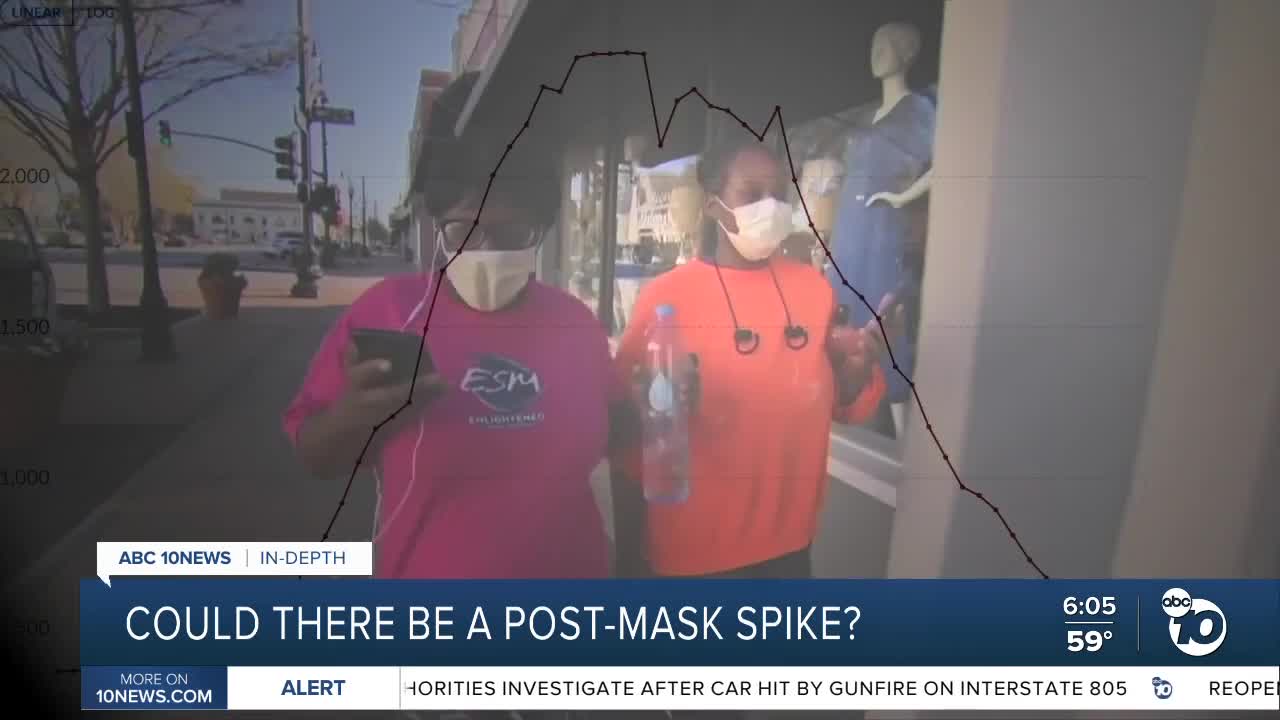SAN DIEGO (KGTV) – As Californians celebrate the end of indoor mask mandates for vaccinated individuals, it’s hard to forget what happened the last time the state loosened its public health guidance.
On June 15, 2021, state health officials lifted restrictions. A month later, cases spiked 10-fold. On July 28, the state urged everyone to put their masks back on.
This week, more Californians are infected with COVID than there were back in July. Could that whiplash happen again?
ABC 10News posed that question to two epidemiologists who said it’s highly unlikely.
“The percent circulation of the virus in the community is very low right now. Even without a mask indoors, the chances of you getting omicron is very low simply because there are no more people to infect. Omicron ran out of people to infect,” said Dr. Ali Mokdad, a professor at the Institute for Health Metrics and Evaluation at the University of Washington.
This time is different, said UC San Francisco professor Dr. George Rutherford, because so few people in the U.S. remain susceptible.
“We may have infected 20 percent, 25 percent of the U.S. population with omicron,” Rutherford said. “Plus, there’s all the people who are vaccinated. Plus, there’s the Venn diagram of people who’ve been infected and vaccinated.”
In California, case rates have been consistently dropping since their all-time peak in mid-January.
The rate of transmission in San Diego County dropped so low this week it took an average of two infected people to pass the virus to one new person, a sign that viral spread is dying out.
With transmission levels on the decline, “the chance of someone who’s susceptible coming into contact with someone shedding virus goes down precipitously. And so that’s the bet with stopping the mask mandates,” Dr. Rutherford said.
Last year in June, cases took off because a new variant arrived: delta. Our experts said that’s what it would take to set off another spike.
But with improvements to genetic surveillance, scientists should get a warning if a new variant starts to emerge. At that point, public health officials could reimpose mask restrictions. Unlike last year, doctors now have highly effective early treatments such as Pfizer's antiviral pill that are unlikely to lose activity if the virus mutates its shell.
Trying to predict how and when the virus might evolve is nearly impossible, but Dr. Mokdad said the next opportunity for a surge might come this summer when the population will be more susceptible.
“I am concerned over the summer simply because of waning immunity five to six months from infection and vaccine,” he said.





